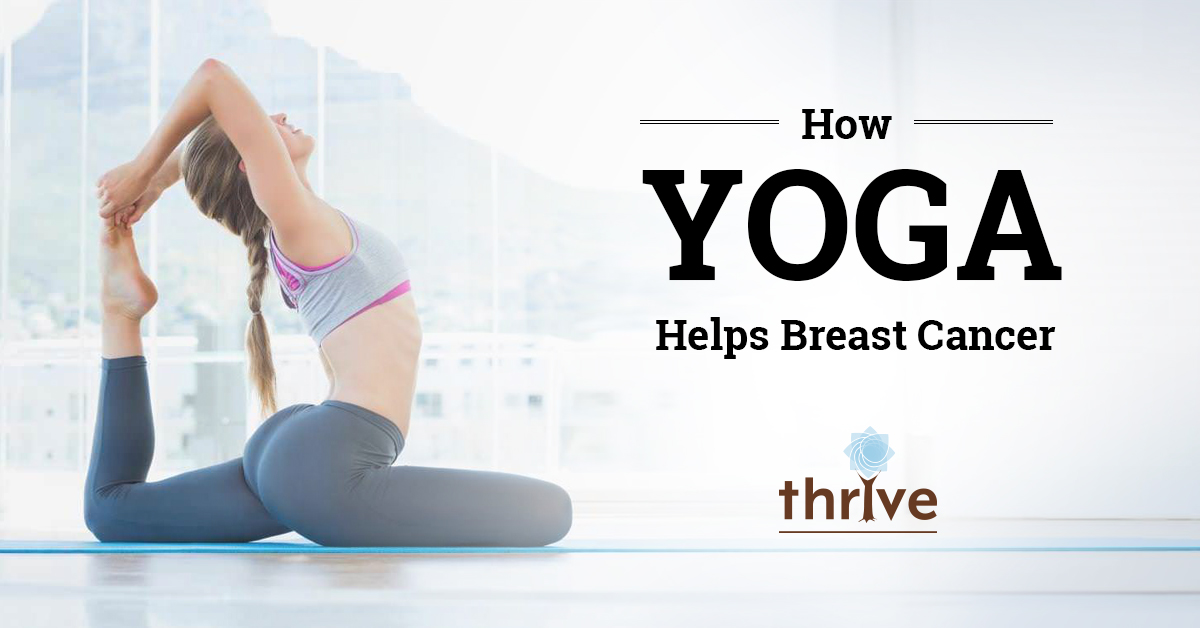It’s hard to stay active when you have breast cancer. Fatigue, distress, and nausea are just a few of the reasons why cancer patients give up exercise, has been shown to reduce chronic pain, boost energy, and even help reduce some medication-associated side effects. If you’re having trouble staying active, consider yoga. It’s a gentle exercise that can accommodate people of every age and condition. Pace and intensity can be adjusted to fit your physical needs, and studies have shown that cancer patients who practice yoga benefit in multiple ways.
How Yoga Helps Breast Cancer Patients
Indian priests known as Brahmans created yoga 5,000 years ago, as a way to strengthen the body and the mind. This dual approach offers great benefits to women suffering from breast cancer.
- It lowers fatigue. Cancer fatigue saps your energy, making it difficult to complete activities. However, a meta-study published by the National Center for Biotechnology Information found that breast cancer patients who practiced yoga reported less fatigue and were better able to participate in their daily activities than women who remained inactive.
- It alleviates chronic stress. Chronic stress suppresses your immune system, lowers your appetite, and interferes with sleep. For obvious reasons, chronic stress is common in breast cancer patients, but studies have found that yoga counteracts the symptoms related to chronic stress in breast cancer patients. Women in yoga reported feeling healthier, sleeping more, and had better appetites than those who did not participate. They also reported improvements in their mood and found it easier to stay positive during treatment. Yoga’s relaxation techniques (e.g. controlled breathing, meditation) also lowered levels of cortisol – a stress hormone released by your adrenal glands. A separate study found yoga increased levels of gamma-amino butyric acid, an amino acid that prevents nervous anxiety.
- It reduces pain. Two separate studies published by the National Center for Biotechnology Information found that cancer patients who practiced yoga suffered less physical distress during their treatment. Yoga made it easier for them to endure the negative side effects of radiation, chemotherapy, and hormone therapy.
- It reduces risk of recurrence. A study found that breast cancer survivors who increased their level of physical activity after their diagnosis lowered their risk of death by 45 percent.
The main advantage of yoga is its flexibility. It encourages you to go slow, test your body, and stop when you feel pain or discomfort – making it an ideal exercise for cancer patients.
How to Choose the Right Yoga Style
There are many different ways to practice yoga. Some focus on building strength, some focus on improving flexibility, while others focus on meditation and spirituality. Exploring different schools will help you discover which type of yoga will provide you with the most benefits.
- Anusara Yoga: American John Friend created Anusara yoga in 1997. It emphasizes core stability, spinal mobility, and philosophical introspection. It’s designed to help you unlock the keys to your mind, body, and spirit.
- Ashtanga Yoga: Also known as power yoga, Ashtanga is fast-paced, repetitive, and physically challenging – a great way to strengthen your muscles and lose weight.
- Bikram Yoga: Bikram yoga uses a set of 26 poses that work all your major muscle groups and is performed in studios heated to 90-105°F, in order to stimulate oxygen and blood flow. Always bring a towel and plenty of water to each class.
- Hatha Yoga: Hatha is the most basic form of yoga. A Hatha yoga class will teach you basic yoga poses and breathing techniques. Hatha classes are slow-paced and great for beginners.
- Iyengar Yoga: Iyengar yoga gets its name from its creator, K.S. Iyengar. It puts a great deal of emphasis on form and posture. Instructors often give beginning students blankets, blocks, and straps to help them learn the poses and compensate for any physical problems they may have. It builds strength, stamina, balance, and flexibility.
- Restorative Yoga: Restorative yoga is extremely relaxing. Students work through a small number of poses that they hold for 10-20 minutes. Instructors encourage slow, gentle movement. It’s not a strenuous workout, but a good way to relieve stress.
- Vinyasa Yoga: Sometimes called flow yoga, Vinyasa yoga synchronizes movement and breath. Students move smoothly from pose to pose, without any pauses in between, like dancing. It’s a great exercise for strength and stamina.
When starting out, you’ll want an experienced instructor who will guide you through the poses at your own pace. Also, talk to your doctor before starting a new form of physical exercise.




Add new comment